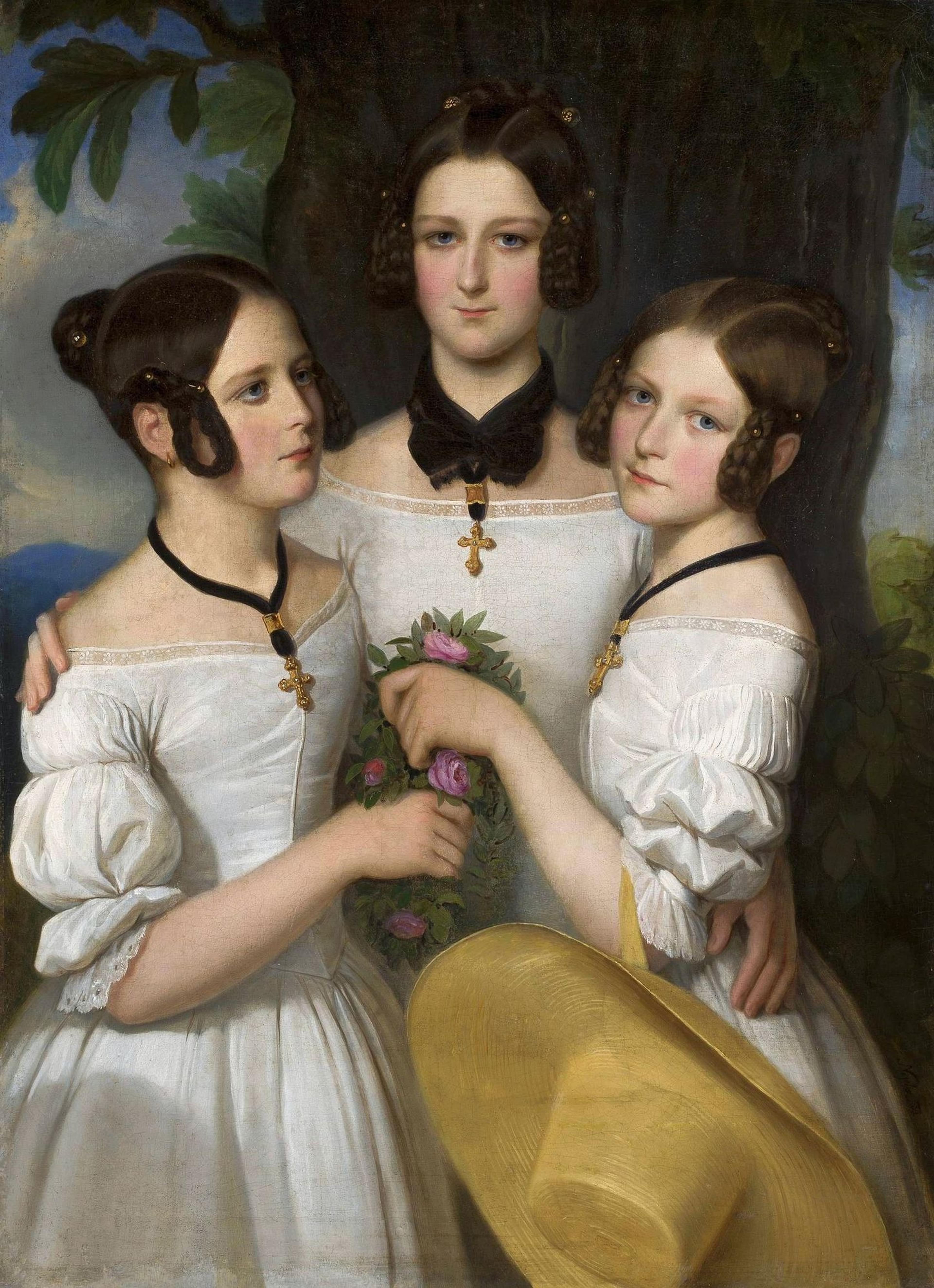This white enamel ring memorializes two brothers, one killed at the Patna Massacre in India in 1763. The gold letters say "Suffer'd at Pat, E.I." "Pat" is the city of Patna in Bihar, situated on the Ganges river. "E.I" is the East India Company, a monopolistic corporation that exploited India and Southeast Asia for spices, silk, and tea. By the mid-1700s to early 1800s, it accounted for half of the world's trade. Employees of the East India Company, if they didn't die of tropical disease, had the chance to get very rich. These two men never did - instead, at least one of their bodies (along with those of 45 other English men) were thrown down a well by a fed-up ruler named Mir Qasim. The date of what we now call the "Patna Massacre" was October 6, 1763; this is imprinted on one side of the band: G.Willson sufferd at Pat E I Oct 6 1763. Usually we see memorial rings in black enamel; white means the deceased was unmarried. On the front, a tree of life is embroidered in silk. The tree's "thread" is actually hair. The second side of the band reads John Willson Ob 8 March 1764 AE 29. Perhaps the hair was his, if he made it home.
dedications read:
G Willson Suffered at Pat:EI Oct 6 1763 AET 35
John Willson OB 8 March 1764 AE 29
thedetails
- Materials
18k gold (tests), white enamel, rock crystal, hair sewn into a grosgrain ribbon
- Age
c. 1770
- Condition
Very good - some minor losses to the enamel
- Size
8.25, cannot be resized; 5/8" x 1/2" head, just shy of 1/8" shank
Need more photos?
Send us an email to request photos of this piece on a model.

Aboutthe
GeorgianEra
1714 — 1837
As imperialist war raged in the Americas, Caribbean, Australia, and beyond, the jewelry industry benefited: colored gems from all over the empire became newly available. A mix of artistic influences from around Europe contributed to the feminine, glittering jewels of the era. Dense, ornate Baroque motifs from Italy showed up in Georgian jewelry, as did French Rococo’s undulating flora and fauna. Neoclassical style made use of Greek and Roman motifs, which were newly popular due to the recently uncovered ruins of Pompeii and Herculaneum. Lapidary methods improved: the dome-shaped rose cut was popular, as was the “old mine cut,” a very early iteration of today’s round brilliant cut.
The boat-shaped marquise diamond cut was developed around this time, supposedly to imitate the smile of Louis XV’s mistress, the marquise de Pompadour. Paste — an imitation gemstone made from leaded glass — was newly developed in the 18th century, and set into jewelry with the same creativity and care as its more precious counterparts. Real and imitation gems were almost always set in closed-backed settings, lined on the underside with thin sheets of foil to enhance the color of the stone and highlight it's sparkle. This makes Georgian rings tough for modern women to wear, especially on an everyday basis: genteel, jewelry-owning ladies of the 18th century were not famous for working with their hands like we are. Nor did they wash their hands as much as we do. Water will virtually ruin a foiled setting, so take special care with your Georgian ring. Very little jewelry from this period is still in circulation, and it's very difficult to repair.
please note:Terms of Sale
Antiques can be returned unworn and in original condition within 10 days of delivery for an exchange or refund minus the cost of shipping. Once a piece has been altered, including ring re-sizing, it is FINAL SALE.












